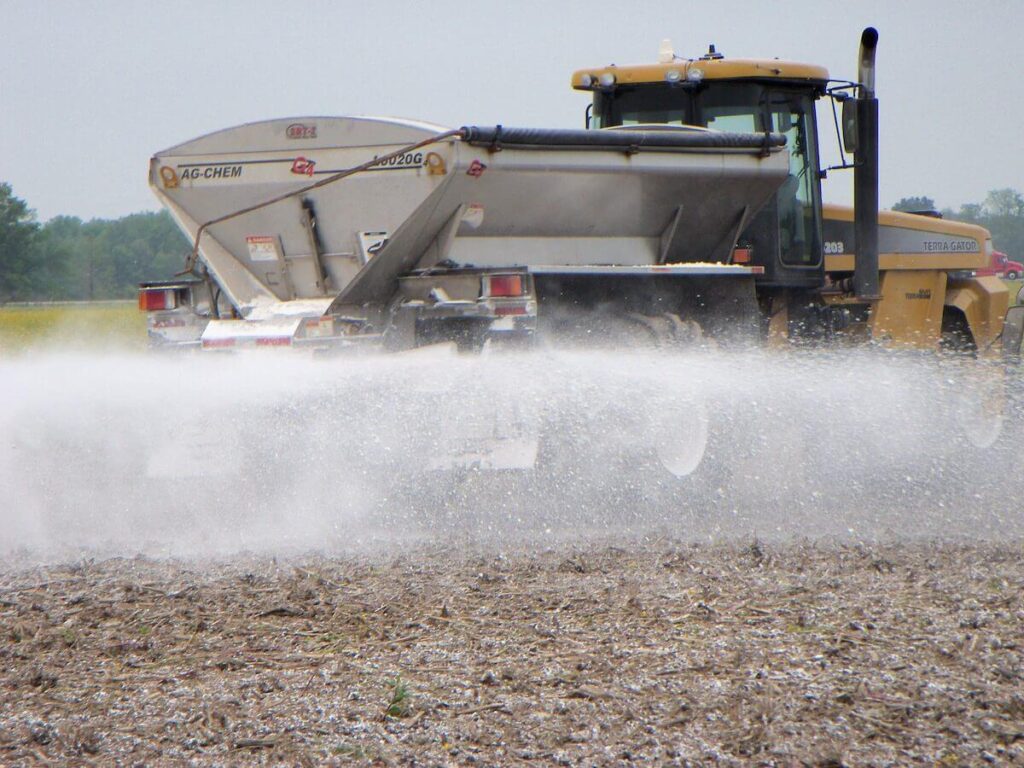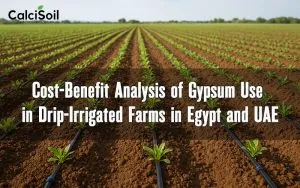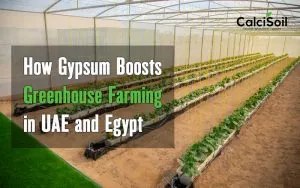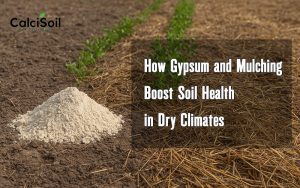
Best time to apply gypsum for soil
applying gypsum for soil can provide several benefits as a fertilizer. including being a source of nutrients, improving soil structure, reducing soil erosion, reducing soil acidity, reducing salt levels. Also being non-toxic and safe, and recycling waste product. However, it is important to avoid over-application of gypsum. As it can strip essential nutrients from the soil and cause harm to plant growth. But there will be a question about the time for applying gypsum.
The best time to apply gypsum for soil depends on the specific situation and the type of soil. Here are some general guidelines.
-Apply gypsum only once per year, as it works very slowly in the soil.
-Always retest your soil before reapplying gypsum to see how much is needed.
-For established lawns, the best results are found when gypsum is applied after a lawn aeration. The aerator removes small plugs of soil from your lawn, creating holes about the size of your small finger. If the gypsum is applied directly after the aeration, it enters those holes. and has direct contact with the soil in those holes.
-Although best applied in the fall, lime can be applied at any time of the year. For even coverage, apply half the lime in one direction and the rest in a crisscross pattern.
-It’s important to avoid over-application of gypsum. but mostly, you can apply 40 pounds of gypsum to soil every thousand square feet at any time of year. That number will be a little lower. about 20 to 30 pounds per every thousand square feet. if you plan to plant flowers, shrubs, or vegetables.
-After applying gypsum, you can wait three years to apply it again.
In summary, the best time to apply gypsum for soil depends on the specific situation and the type of soil. It is important to retest the soil before reapplying gypsum. and for established lawns, the best results are found when gypsum is applied after a lawn aeration. Although best applied in the fall, lime can be applied at any time of the year. It is also important to avoid over-application of gypsum and to wait three years before applying it again.
Recommended amount of gypsum for soil
The recommended amount of gypsum to apply to soil varies depending on the specific situation and the type of soil. Here are some general guidelines.
For gardens. Apply roughly one-half pound of gypsum per square foot of soil in your garden using a lawn spreader.
For lawns. Apply about 20 pounds of gypsum for every 100 square feet of garden space. Established lawns require 10 pounds of gypsum per 150 square feet in the spring and fall.
For vegetables. Spade in 10 pounds of gypsum for every 80 square feet.
For roses and flowers. Spade in 1/2 pound of gypsum per plant and mix well with soil. Soak the area with water.
For trees. Use 2-3 pounds of gypsum per tree.
For shrubs. Use 1-2 pounds of gypsum per shrub.
For potted plants. Make a mix of two to three handfuls of gypsum for every one gallon of water. Add one or two cups of this solution to increase your plant’s health and growth.
It is important to note that the amount of gypsum needed may vary depending on the specific soil conditions. It’s recommended to have a soil analysis performed to reveal information about the levels of mineral deficiency and soil character.
Applying gypsum risks
While gypsum can be beneficial for soil, there are also some risks associated with its application. Here are some of the risks.
Over-application. Applying too much gypsum to your soil can strip essential nutrients from your soil. such as iron, aluminum, and manganese, which can harm plant growth. It can also remove too much sodium from soils that are already low in salt.
Short-lived effects. The gypsum effects are short-lived and will only last a few months before the soil reverts to its original state. Regular applications of gypsum will be required to maintain the benefits.
Decreased potassium or magnesium levels. Gypsum is more soluble than lime and can add calcium more rapidly to the soil. This may result in decreasing potassium or magnesium levels in the soil. It is important to monitor this by soil testing.
Not necessary for all soils. Using gypsum for garden tilth will probably not harm your plants, but it simply is not necessary. Regular additions of organic matter are preferred both for cost and side effect reasons.
Not effective in sandy soils. Gypsum doesn’t work in sandy soils and can deposit an excess of calcium in regions. where the mineral is already abundant.
Harmful to other areas. An abundance of gypsum can remove elements such as iron, aluminum, and manganese from your soil. and cause them to contaminate other areas, harming plant growth.
In summary, while gypsum can be beneficial for soil, it is important to avoid over-application. monitor the levels of potassium and magnesium, and understand that it is not necessary for all soils. Also gypsum is not effective in sandy soils and can be harmful to other areas if applied in excess.







